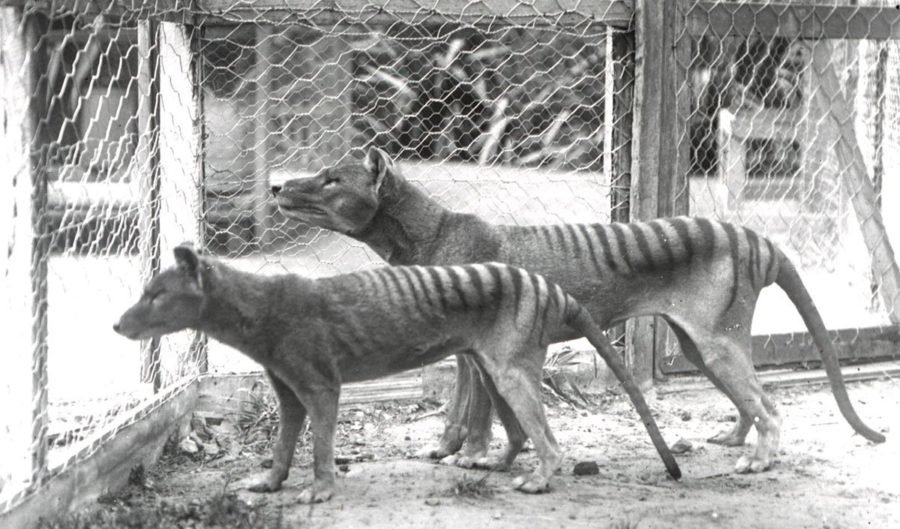Scientists reveal new insights into the thylacines early development

THE EXTINCT TASMANIAN tiger looked like any other marsupial shortly after birth and it was not until later in development, just before leaving the pouch, that its skeleton started to take on dog-like proportions, new 3D modelling has revealed.
The research, jointly conducted by Museums Victoria and The University of Melbourne, was focussed on learning more about the development and physiology of the thylacine, which would then allow scientists to better interpret the thylacine genome that was successfully sequenced for the first time late last year.
The 3D digital models of the thylacines development, published today in the Royal Society, provide the first complete picture of the thylacine’s developmental trajectory in the pouch.
See more: Fake or real? This photo of a thylacine has caused a lot of controversy
The scientists used X-ray computed tomography, similar to CAT scans —often used on Egyptian mummies and delicate, ancient artefacts — to create the digital images and pinpoint the exact moments developments occurred and how.
“Up until now we knew very little about the thylacine’s life in the pouch, which is a critical period of growth and development for marsupials,” Evolutionary Biologist Christy Hipsley told Australian Geographic.
“We presumed it would follow a relatively conserved trajectory, since like all marsupials they must undertake an extensive crawl to the pouch to continue their development.
“But what we didn’t know is when during that pouch period they overcome these evolutionary constraints to take on the proportions of a cursorial placental carnivore like dingo or wolf.”

The development stages
Analysis of the 3D images showed that at around one to two weeks old the thylacine underwent accelerated development of its forelimbs and facial bones, however at this point it only possessed rudimentary hindlimbs, explained Christy.
“It wasn’t until after a month of pouch development that the hindlimb bones started to catch up and got larger and stronger, and overall it started to look like a little thylacine.”
“By 9 weeks it really had taken on the appearance of a baby thylacine, though interestingly it was yet to develop its namesake stripes.
“After 12 weeks, the entire window of dependent pouch growth, the stripes were present and remarkably the thylacine looked like a puppy – revealing its dog-like appearance.”

De-extinction
Following the sequencing of the thylacine genome last year there was much speculation around whether de-extinction was possible.
“The more we learn about the biology of these fascinating animals, including their development, the more we can interpret their genome. All of these are critical steps in de-extincting an animal.
“There are still many hurdles to overcome in de-extinction, but understanding their biology both early and later in life brings us a small step closer.”
READ MORE:
- An endless quest: the search for the Tasmanian tiger
- Tassie devils and thylacines went extinct from the mainland at the same time
- Extinction: is it really that bad?

